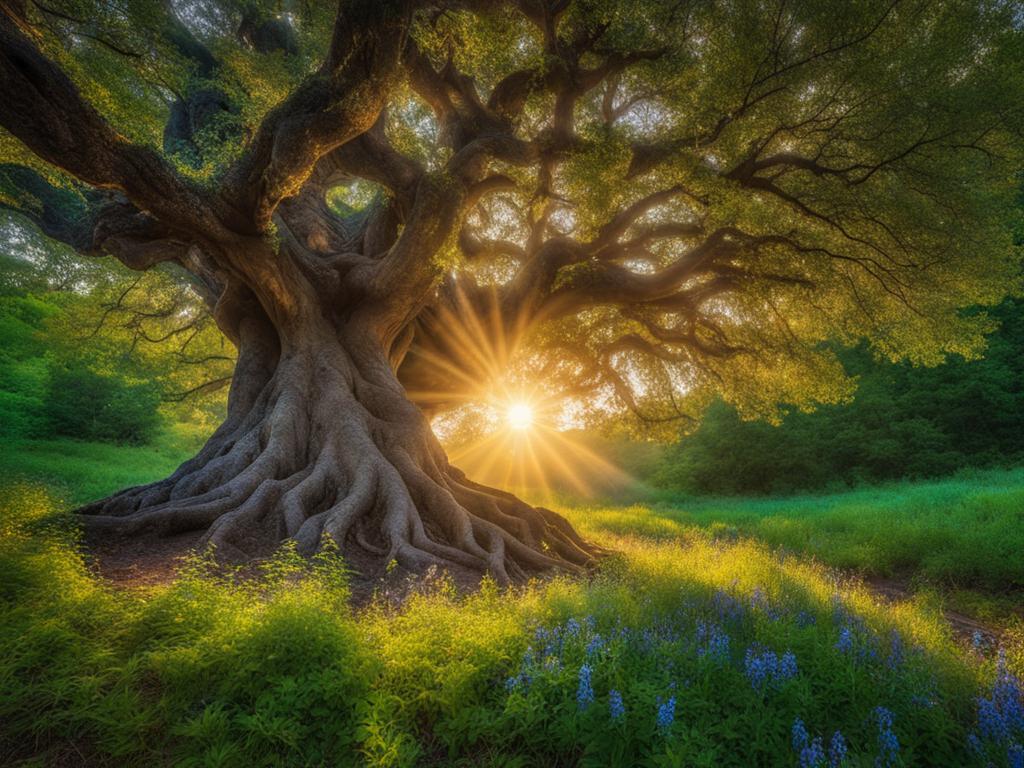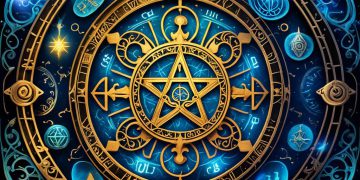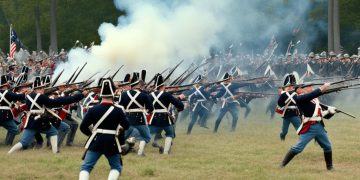Embark on a journey through time as we explore the enchanting realm of folklore and fairy tales. In this section, we will uncover the fascinating origins of these beloved tales and trace their roots across cultures. Get ready to dive into the magical world of storytelling and discover the timeless appeal of the stories that have captivated generations.
Key Takeaways:
- Folklore and fairy tales have a rich history with origins that can be traced back through centuries.
- These beloved stories have variations and interpretations across different cultures, reflecting the values and beliefs of each society.
- Fairy tales serve a purpose beyond entertainment, conveying moral teachings and deeper messages.
- Modern authors and filmmakers have reimagined and revived folklore and fairy tales, breathing new life into classic stories.
- Exploring the origins of folklore and fairy tales provides insight into our shared human experiences and the cultural significance of these stories.
Variations of Fairy Tales Across Cultures
Fairy tales have long been cherished for their timeless appeal and universal themes. However, beneath the veneer of universality lies a rich tapestry of unique variations and interpretations that span across different cultures. These cultural nuances give each fairy tale a distinctive flavor that is rooted in the customs, traditions, and values of the society from which it originates.
Take the classic fairy tale of “Cinderella,” for example. We may be familiar with the European version featuring a young girl, an evil stepmother, and a charming prince. But did you know that there are countless adaptations of this beloved tale from cultures around the world?
“Yeh-Shen,” the Chinese rendition of Cinderella, dates back to the 9th century and features a magic fish instead of a fairy godmother. In the African tale of “Mufaro’s Beautiful Daughters,” Cinderella’s counterpart is a kind-hearted young woman named Nyasha. These variations not only showcase the diverse settings and characters but also offer valuable insights into the cultural values and ideals of different societies.”
Another example is the tale of “Little Red Riding Hood.” While the European version warns against stranger danger, variations from other cultures reflect their unique concerns and traditions. In the Chinese version, known as “The Tiger Grandmother,” a young girl outsmarts a shape-shifting tiger. In the Thai tale of “Little Goldy,” the protagonist encounters a deceptive crocodile instead of a wolf.
These variations are not merely isolated instances but are rather representative of a broader pattern across fairy tales from different cultures. They highlight the influence of cultural contexts on storytelling, resulting in adaptations that resonate with specific audiences.
Cultural variations also extend beyond plotlines and characters, encompassing elements such as themes, symbols, and settings. For instance, in Japanese folklore, the supernatural spirit known as the “kitsune” often makes appearances in various tales, adding a distinct flavor to Japanese fairy tales.
By exploring these variations, we gain a deeper appreciation for the richness of fairy tales as a reflection of human experiences and cultural diversity. It allows us to dive into the vibrant tapestry of traditions, customs, and beliefs that shape societies across the globe.
Cultural Variations in Fairy Tales
| Fairy Tale | European Version | Chinese Version | African Version |
|---|---|---|---|
| Cinderella | A young girl, an evil stepmother, a fairy godmother, and a prince | Yeh-Shen with a magic fish | Mufaro’s Beautiful Daughters – Nyasha |
| Little Red Riding Hood | A girl encounters a wolf | The Tiger Grandmother with a shape-shifting tiger | Little Goldy meets a crocodile |
| Sleeping Beauty | A princess cursed by a wicked fairy | Tale of Turandot with an emperor’s daughter | Osan the Origin of the Rose |
The cross-cultural diversity showcased in fairy tales serves as a powerful reminder that storytelling transcends borders and unites people in their shared human experiences. As we delve deeper into the enchanting world of fairy tales, we unveil the intricate threads that connect us and celebrate the beauty of global storytelling.
The Role of Fairy Tales in Society
Fairy tales go beyond mere entertainment value; they serve a significant purpose in society. These timeless stories hold a captivating power over audiences of all ages, imparting valuable lessons and exploring deeper aspects of the human experience. Let us delve into the social and psychological significance of fairy tales, examining their moral teachings, archetypal characters, and the darker aspects that lurk beneath the surface.
Fairy tales have long been regarded as moral guides, teaching us important values and virtues. Through allegorical narratives, they impart lessons on bravery, kindness, perseverance, and the consequences of our actions. These moral teachings provide a foundation for ethical behavior, shaping the values of individuals and, subsequently, the collective society.
The characters in fairy tales often embody archetypes that resonate with universal human experiences. From the wise old mentor to the wicked stepmother, these archetypal figures represent aspects of our own psyches and provide insight into the complexities of human nature. By relating to these characters, audiences can develop a deeper understanding of themselves and others.
“Fairy tales are more than true: not because they tell us that dragons exist, but because they tell us that dragons can be beaten.”
However, fairy tales also possess a darker side that is often overlooked. Traditional fairy tales are replete with cautionary elements, exploring themes of danger, loss, and the consequences of succumbing to temptation. The presence of these darker aspects adds depth and complexity to the stories, allowing audiences to grapple with the complexities of life and confront their fears in a safe and controlled environment.
By analyzing the role of fairy tales in society, we uncover their profound impact on individuals and communities. They not only entertain, but also educate and inspire. Fairy tales continue to evolve, adapting to contemporary cultures and retaining their timeless allure. Now, let’s take a closer look at some examples of these darker aspects in traditional fairy tales.
The Darker Aspects of Traditional Fairy Tales
| Fairy Tale | Darker Aspect |
|---|---|
| Little Red Riding Hood | Cautionary tale about the dangers of trusting strangers |
| Hansel and Gretel | Exploration of abandonment, hunger, and the malevolence of witchcraft |
| Cinderella | Portrayal of family dysfunction and the mistreatment of the marginalized |
| Snow White | Themes of vanity, jealousy, and the predatory nature of evil figures |
These examples illustrate how traditional fairy tales tackle darker themes, offering cautionary narratives that allow audiences to confront fears and learn valuable life lessons. However, it is important to note that fairy tales have evolved over time. Contemporary adaptations often reinterpret these tales to address societal issues, incorporate diverse perspectives, and challenge traditional gender roles.
The enduring allure of fairy tales lies in their ability to illuminate the human condition, stoke the imagination, and inspire introspection. They continue to weave their magic across generations, adapting to the changing needs and values of society. Let us explore further as we embark on the journey of reviving and reimagining folklore later in this article.
Now that we have explored the role of fairy tales in society and examined their darker aspects, we can truly appreciate the profound influence these stories hold. Their moral teachings, archetypal characters, and exploration of the human psyche make them an essential part of our cultural fabric. Join us in the next section as we delve into the revival and reimagining of folklore in modern literature and film.
Reviving and Reimagining Folklore
Folklore and fairy tales have stood the test of time, captivating audiences across generations. However, these timeless stories have not remained stagnant, but rather evolved and found new life in modern literature and film. Contemporary authors and filmmakers have taken on the task of revitalizing these classic tales, breathing fresh air into familiar narratives while still paying homage to their original essence.
In today’s literary and cinematic landscape, reviving and reimagining folklore and fairy tales has become a common practice. These adaptations and retellings provide exciting opportunities to explore different perspectives, reinterpret themes, and introduce modern sensibilities to beloved stories. By infusing these narratives with contemporary relevance, authors and filmmakers ensure that the magic of folklore continues to resonate with audiences of all ages.
Updating Classic Tales for Modern Audiences
One notable way in which folklore and fairy tales are being revived is through the process of updating classic tales for modern audiences. This involves revisiting familiar characters and storylines, but with a fresh spin that reflects the current social and cultural landscape. By injecting new elements and perspectives, these adaptations breathe new life into age-old tales, capturing the imagination of readers and viewers in new and exciting ways.
“Fairy tales are not just for children, but for all ages. Through adaptations, we can explore the timeless themes and moral lessons found in folklore, while also examining contemporary issues and ideas.” – Jane Anderson, renowned author and folklore enthusiast
Exploring Untold Tales and Marginalized Voices
Another way in which folklore and fairy tales are being reimagined is by exploring untold tales and giving voice to marginalized characters. In contemporary adaptations, authors and filmmakers have shifted the focus from traditional protagonists to previously overlooked or underrepresented characters. This approach not only provides a fresh perspective but also allows for a deeper exploration of themes such as identity, diversity, and inclusivity.
Blending Genres and Crossing Boundaries
In the realm of modern literature and film, folklore and fairy tales are not confined to their traditional genres. Authors and filmmakers are increasingly blending genres and crossing boundaries to create unique narratives that combine elements of fantasy, romance, adventure, and more. By breaking free from the constraints of genre, these works push the boundaries of storytelling and offer readers and viewers a truly immersive and captivating experience.
The reviving and reimagining of folklore and fairy tales in modern literature and film is a testament to the enduring power and universality of these stories. By breathing new life into beloved tales, contemporary adaptations invite audiences to embark on enchanting journeys of imagination and discovery.
Conclusion
In conclusion, the enchanting world of folklore and fairy tales is a testament to the enduring power of storytelling. These timeless tales have captivated audiences across cultures for centuries, serving as vessels for the transmission of cultural values and universal truths.
By tracing the origins of popular stories, we gain a deeper understanding of our shared human experiences and the cultural significance these tales hold. From the ancient myths and legends passed down through generations to the beloved fairy tales that continue to be cherished today, the roots of folklore and fairy tales offer insights into the beliefs, fears, hopes, and dreams of diverse societies.
Join us on this journey of discovery as we uncover the magic and wonder behind folklore and fairy tales. Explore the variations and interpretations that different cultures have added to these stories, the role they play in society beyond mere entertainment, and how they have been revived and reimagined in modern literature and film.
Through the study of folklore and fairy tales: tracing the origins of popular stories, we not only gain a deeper appreciation for the art of storytelling but also connect with our shared humanity across time and cultures. So, immerse yourself in these captivating narratives, and let the enchantment of folklore and fairy tales transport you to worlds where anything is possible.







